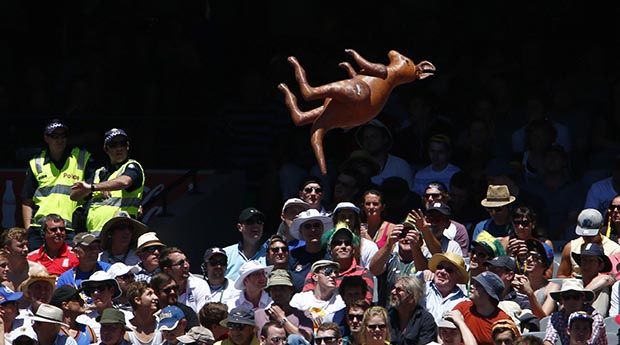The Kangaroo market is coming into its own. The deep investor base provided by superannuation funds generates a natural bid for SSA paper and is simply too big to ignore.
To see the digital version of this report, please click here.
To purchase printed copies or a PDF of this report, please email gloria.balbastro@thomsonreuters.com.
The Kangaroo market has matured. Once the funding choice for issuers that simply wanted to diversify their funding bases, supranationals and agencies are now looking at issuance in Australian dollars in a more mature manner. Little wonder then that the Asian Development Bank has called it the fourth currency alongside the G3.
The figures speak for themselves. On the back of A$19bn (US$17.65bn) of redemptions in the first quarter, issuance this year has jumped by 35%, according to Barclays. The first quarter of the year saw Kangaroo deals totalling A$11.5bn, considerably higher than the A$8bn seen in the same period last year.
A familiar dynamic over the past few years has been the SSAs tapping their long-dated bonds. In March alone, this was a route taken by Rentenbank, the Inter-American Development Bank, Nederlandse Waterschapsbank, Nordic Investment Bank and Council of Europe Development Bank, among others, which all tapped their 2024s. Only Export Development Canada and KfW tapped shorter-tenor 2018s.
But new issues are appearing, too. Finnish local government lender Municipality Finance sold A$125m of 5.0% 2024s through CBA, Deutsche Bank and TD Securities at the start of March, and most recently of all, in early April, Metropolitan Life Global Funding, one of the world’s largest providers of insurance, annuities and employee-benefit programmes, sold a similar A$125m 5% 10-year Kangaroo bond offering through joint lead managers CBA, Deutsche Bank and TD Securities.
Until recently, the main attraction of the Australian dollar, especially for European SSAs, was the basis swap, with issuers selling debt that offered a spread over Australian government issues but that when the proceeds were swapped back provided attractive funding. But this dynamic has changed.
Not just arbitrage
“Issuers don’t see the Kangaroo market strictly as an arbitrage market any more. Rather, it has matured and grown over the past few years, and is increasingly seen as one of the core alternative markets for them to meet their funding requirements,” said Ken Wei Wong, head of debt syndicate for Asia ex-Japan at Barclays in Hong Kong.
There are several reasons. First and foremost, SSAs are able to get the duration that they need Down Under. They are all facing refinancing and both the US dollar and the euro markets are limited for any tenor beyond five years. Although corporates might have difficulties selling a tenor of 10 years in the Australian market, SSAs do not have that problem.
Second, the market has decent onshore liquidity thanks to the growth of superannuation funds. By the end of last year these funds had reached A$1.8trn, according to the Association of Superannuation Funds of Australia. According to Barclays, close to 70% of domestic managed funds come from these pension funds, which by their nature look for solid, highly rated credits with decent duration.
Related to this, what is also notable about SSA issuance in Australia is the plain-vanilla nature of the structure. This too is an attraction for issuers and a function of the investor base.
“By-and-large, the onshore investors are very high-grade in nature and vanilla issuance has to a large extent met their investment requirements,” said Barclays’ Wong.
As one banker pointed out, in Australia SSA treasurers do not have to deal with a multitude of different risk requirements and competing demands from hedge funds, asset managers and treasuries. “The Australian dollar onshore market is very concentrated – you can easily count the 10 onshore accounts,” he said. “More to the point, unlike elsewhere in Asia, no one is demanding 10% returns a year.”
Despite a recent flurry of headline-grabbing interest in Kauri issuance – six SSAs have issued NZ$2.3bn (US$1.9bn) of Kauri debt since the start of the year – the depth and the stability of the market as well as the maturity of demand mean that the attraction of the Kangaroo market is not likely to be derailed.
